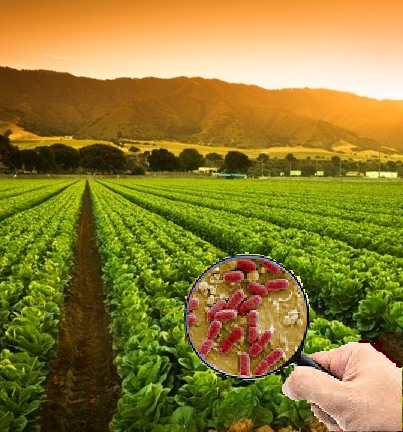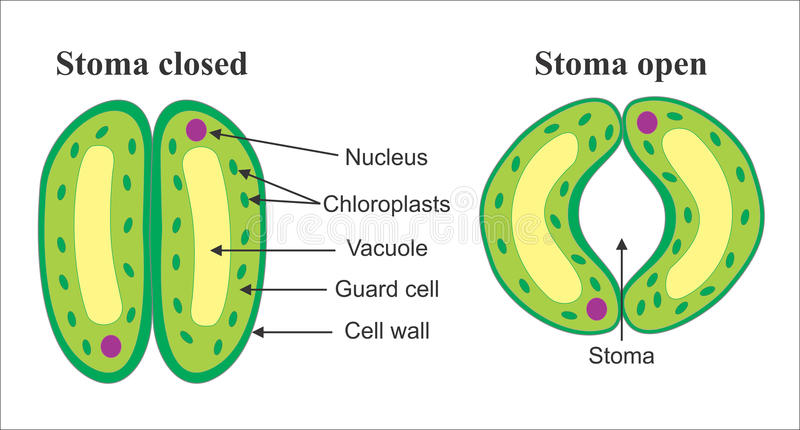How Salmonella can circumvent the lettuce built-in defense mechanism
 Scientists from the University of Delaware, Newark, DE, published an interesting article in Frontiers in Microbiology showing how Salmonella enterica Typhimurium, when applied to lettuce leaves, have found a way of avoiding the plant defenses and find their way into the lettuce leaves. As a result, they get into the lettuce leaves and, thereby, get protection against the plant immune systems. The entrance into the plant prevents Salmonella from being washed off in the kitchen. Washing and even chemical treatments cannot remove the Salmonella that has already found its way into the leaves of a plant.
Scientists from the University of Delaware, Newark, DE, published an interesting article in Frontiers in Microbiology showing how Salmonella enterica Typhimurium, when applied to lettuce leaves, have found a way of avoiding the plant defenses and find their way into the lettuce leaves. As a result, they get into the lettuce leaves and, thereby, get protection against the plant immune systems. The entrance into the plant prevents Salmonella from being washed off in the kitchen. Washing and even chemical treatments cannot remove the Salmonella that has already found its way into the leaves of a plant.
What are Stomata?

Stomata are a minute pore opening found in the epidermis of plant leaves, stems, and other organs that facilitates gas exchange. The stomata are open and close to allow the intake of CO2 (for photosynthesis). It also releases oxygen into the atmosphere. Plants actively close their stomata upon sensing microbe-associated molecular patterns, thereby preventing pathogen entry into the leaves and the resultant colonization of host tissues. However, pathogens have evolved strategies to mask their presence and evade the plant host defenses.
The study
The purpose of the study was to investigate if Salmonella enterica Typhimurium when applied to lettuce leaves can suppress the lettuce’s innate stomatal defense. They also studied the utilization of UD1022 (Bacillus subtilis UD1022) as a biocontrol against the invasion.
Lettuce leaves were spot inoculated with S. Typhimurium wild type and its mutants. The results showed that S. Typhimurium might bypass the innate stomatal closure defense response in lettuce and access the “locked door” of the stomata. The most important virulence factor of Salmonella, the type III protein secretion system (T3SS), is regarded as a key component in S. Typhimurium’s involvement in overriding stomatal defense response in lettuce for entering the leaf.

Salmonella entrance into the leaves was not detected in plants after UD1022 treatment and had significantly higher stomatal closure rates (aperture width = 2.34 μm) by day 1 compared to controls (8.5 μm). Mutants of S. Typhimurium SPI1 and SPI2 showed an inability to reopen stomates in lettuce, indicating the involvement of critical T3SS components in the suppression of innate response in plants.
The study found that S. Typhimurium 14028 can bypass the plant’s innate immune response to suppress stomatal defense entrance into the leave. The research showed that S. Typhimurium uses key T3SS factors to overcome stomatal defense for ingression.
From all pathogens tested, only the S. Typhimurium treatment showed the ability to keep stomates open, bypassing innate stomatal defense. For example, leaves inoculated with L. monocytogenes closed stomata at 3 h post-inoculation. In contrast, S. Typhimurium treatments kept the stomata open until 12 h post-inoculation. This ability to evade the plant defense mechanism was dependent on T3SS.
The hormone abscisic acid (ABA) has a Central Role in Salmonella’s suppression of stomatal defense for ingression
The study also showed that S. Typhimurium might suppress the hormone abscisic acid (ABA) response in lettuce to keep the stomates open for longer durations. The study discovered that the addition of the S. Typhimurium mediated stomatal non-closure mainly through suppression of the ABA biosynthetic pathway. This study suggests that pathogenic bacteria may associate with plants, which leads to the development of salmonella’s critical strategies to invade plants, resulting in contamination.
Conclusion
The study shows that S. Typhimurium uses a T3SS protein to suppress the immune stomatal defense system. The suppression allows Salmonella to penetrate the leaves, offering them protection from chemicals and washing.
